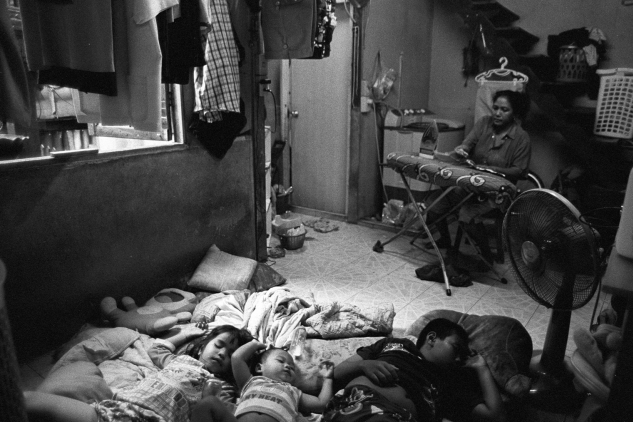
The Bangladeshi garment industry: Made for exploitation?
For over a week the world’s attention has been focussed on the collapse of a garment factory in Bangladesh, in which hundreds of workers have been killed. This tragedy in a country far away has gripped our attention for the shocking and needless loss of human life, and causes us to face the human cost of the clothes we wear. The outrage at such severe abuses mirrors responses to human trafficking and ‘modern day slavery’, as all agree that exploitation should not have a place in our supply chains. But whether low pay or excessive hours, bonded labour or human trafficking, the common thread is profits trumping rights and talk in place of action.
In recent years Bangladesh has been working hard on building its public image on human trafficking, including trafficking for labour exploitation. In 2011 the Government introduced a new Human Trafficking Law swiftly followed by a two-year national plan of action on trafficking. As a result it has graduated a grade on the US government’s annual Trafficking in Persons index. Despite these developments, Bangladesh’s core industries remain largely unregulated and unaccountable to their workers. The garment industry provides 76% of all export earnings and accounts for over 10% of GDP in Bangladesh and is a major supplier to European retailers. Yet, major accountability deficits breed abuse and abuse has led to exploitation, on a scale ranging from low pay, to dangerous conditions right up to forced labour and slavery.
Transparency and accountability in supply chains are key tools in the fight against human trafficking and exploitation in all sectors. Outsourcing to countries with poor industry regulations or oversight both offers distance from labour conditions and provides a more flexible legal environment in which global corporations can manoeuvre. The longer the supply chain, the more difficult it is to control, and the harder it is to ensure compliance with labour standards.
Many high-street retail companies recognise the potential damage to their brand from poor labour practices and have incorporated codes of conduct into their supply agreements, requiring minimum standards of pay, workplace safety and other conditions of work. However enforcement relies on both the buyer’s will to act and an awareness of contraventions on the other side of the world. When unions proposed independent mechanism to monitor factory conditions in Bangladesh major retailers roundly refused. The unauthorised use of subcontractors to fulfil orders ever more cheaply and quickly further complicates monitoring and compliance.
This lack of accountability is all the more problematic in Bangladesh, with weak regulation and enforcement, and inadequate labour rights protections. The Bangladeshi government continuously resists regulating an industry on which its economy depends, and in which considerable numbers of parliamentarians and decision makers are directly invested as factory owners. Trade union rights are not adequately protected under Bangladeshi law and the formation and activity of unions is strictly controlled. Women, who make up the majority of the garment sector workforce, have not been integrated into the major unions in Bangladesh. Strikes and protests are harshly dealt with by police and workers have been injured and arrested, while a prominent garment worker activist was last year tortured and killed afterreportedly suffering years of harassment at the hands of Bangladeshi authorities.
The convergence of a vulnerable workforce with a lack of transparency and accountability creates a breeding ground for exploitation of many and various forms throughout the Bangladeshi garment industry. Such exploitation includes the payment of desperately low wages, excessive hours, physical and verbal abuse, and as the recent collapse and earlier fires have demonstrated, the requirement to work in dangerous conditions. There have been reports of workers being forced to work overtime, having their wages withheld, being threatened with dismissal or even physical violence if they refuse to comply with orders. In some cases severe exploitation amounting to slavery or forced labour has been alleged. The use of child labour in Bangladesh’s garment industry is also widespread, particularly on informal production sites. In many more cases the physical and environmental conditions in which people are required to work are undeniably ‘slave-like’.
The government of Bangladesh has received high praise for its performance in combating human trafficking. Yet despite strong words and policies, garment workers in Bangladesh remain unsafe and their rights unprotected. For the government’s promises to ring true it will need to make real commitments to address exploitation and rights abuses. This involves safeguarding workers rights, upholding minimum standards, and punishing infringements. Tackling widespread worker abuse means more than simply making an example of one factory owner or suspending a few supply agreements, then returning to business as usual. It means transformative change to ensure that a tragedy like last week’s never happens again.
Originally published in the Huffington Post
